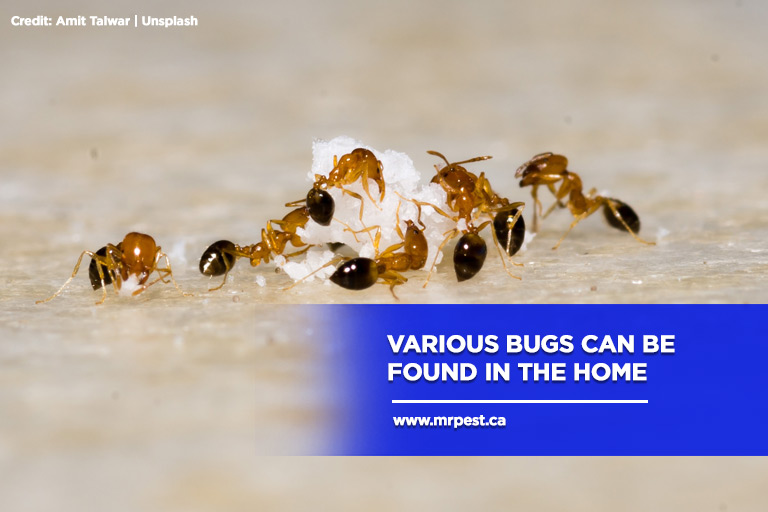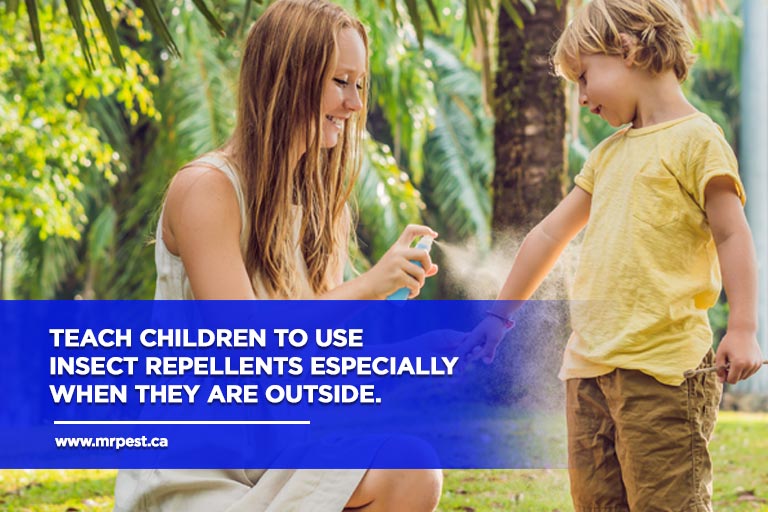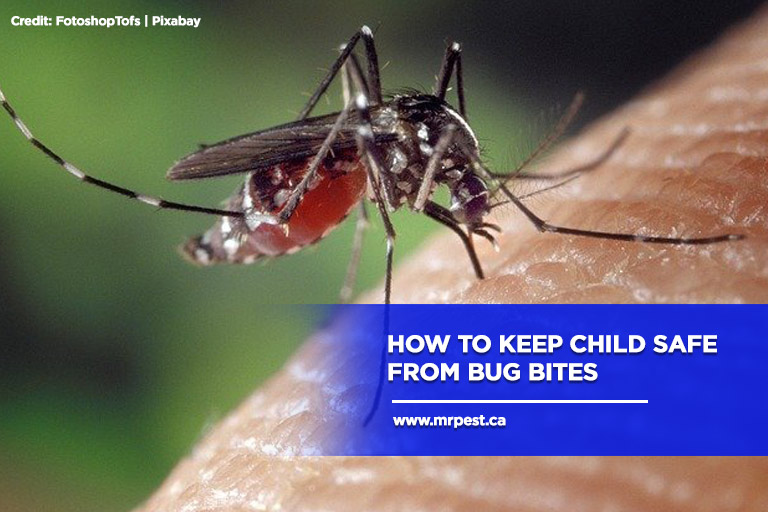Bug bites in babies and children are common. Insects (arthropods) can be found anywhere in the country, can breed rapidly, and are able to withstand different seasons. It’s next to impossible to live a bug-free life. They not only bite, but they can also sting and carry various diseases, with children being the most susceptible to these.
Unfortunately, no matter how much of a nuisance they are, they have a vital role to play in the ecosystem. Pest control — not total eradication — is encouraged when dealing with bugs.
Are bug bites harmful? It depends. The good things is there are certain things you can do to protect you and your children from stings and bites.
Common Bugs at Home

There are thousands of bug species in Canada and hundreds of them are just lurking at home. To know how to protect your children from bug bites, the first thing you need to do is identify the type of bug they are exposed to. Here are the common bugs that can be found around common places in the home:
- Ants
Ants are considered among the biggest nuisance in Canadian households. There are hundreds of species that can get to homes through small cracks or openings. Although they can infest homes most days of the year, they are not known for causing major damage or for carrying diseases. They are only known for being attracted to food. They can leave redness and swelling on the skin if they bite people.
- Cockroaches
Cockroaches earned a bad reputation for being carriers of bacteria. When they land on food or surfaces, they can spread diseases like salmonella, typhoid fever, dysentery, leprosy, cholera, plague, and listeriosis among others. Healthline also notes that while cockroaches do not bite, they can scratch people’s skin with their leg spines which could lead to infection.
- Mosquitoes
Mosquitoes are a blood-sucking nuisance that thrives in a dirty and watery environment. They lay their eggs in bodies of water and plants. They are known carriers of diseases like dengue and malaria. Their bites can cause itching and swelling. It is a good idea to keep a mosquito bites baby treatment kit because kids often scratch the bite site.
- Bees or wasps
Dreamwork’s Bee Movie teaches children and adults about the importance of these insects to the world’s ecosystem. They play a vital role in pollinating plants and keeping the food supply steady. However, they can wander through an open door, crack, or window and even build a hive inside homes. When they feel agitated, they can attack people. Wasps are more likely to sting which can result in swelling and allergic reactions.
- Bed Bugs
Do you often ask, “Why does my child keep getting bug bites?” Sometimes the real monster is lurking in their beds!
Bed bugs are among the world’s most annoying insects. They can multiply fast in almost all places — homes, workspaces, schools, and stores. These animals bite the skin and feed on blood for survival. Even if they are not known carriers of diseases, their bites can be painful and itchy and, in severe cases, can cause allergic reactions. Their presence can also cause a lack of sleep, which is enough reason to control the infestation.
- Fleas
Homes with pets are likely to have fleas around. They are most active when the weather is warm. They can live around trees, leaves, shrubs, and grasses. Because they need blood to live, they can latch on to dogs, cats, and other animals you have at home.
Your pets, however, aren’t the only ones to be affected. Fleas bite humans as well. They suck blood and secrete saliva into the bloodstream. Children and adults can develop rashes and red bite marks appear.
The Dangers of Bug Bites

Children and adults alike can be exposed to bugs and develop mild allergic reactions to the toxins that these critters release. Children’s allergic reactions to bug bites can manifest as blisters, irritation, redness, and swelling. Some severe reactions, although extremely rare, include difficulty breathing, hives, painful joints, shock, and fever.
Flying insects, like mosquitoes, bite areas that are not covered by clothing. Crawling and clinging bugs prefer more accessible body parts like the feet and lower legs. Bed bugs prefer the head and neck area.
Parents need to know what bug bites are dangerous. Keep a close eye on your children’s allergic reactions to bug bites. If they develop hives, fever, swelling, or have difficulty breathing, make sure to bring them to emergency care.
How to Keep Children Safe from Bug Bites
Here are a few ways to protect your kids:
- Using insect repellents
The Canadian Pediatric Society approved 2types of insect repellents: DEET and icaridin. The former has been in the market for a while but the latter is recent.
Icaridin is the synthetic version of a compound found in black pepper. It is less likely to irritate the skin and is not greasy or smelly. Products available in the market come in 10% and 20% concentrations which are considered safe for use for children over 6 months of age. The 10% concentration can protect kids from mosquitoes for 5 hours and the 20% variety protects for up to 7 hours.
DEET come in 10% concentration and are suitable for kids 6 months to 12 years. This can offer protection from bugs between 2.5 to 4.5 hours.
Babies less than 6 months should not use insect repellents. Pediatricians recommend keeping them under a netting to keep bugs at bay.
- Clean the house and surroundings
Insects can thrive inside and outside your home. It is essential to keep your surroundings clean and destroy possible breeding grounds. Regularly cleaning the house and trimming plants in outdoor spaces help control the insect population. These are things you should do regularly :
- Throw away tires, cans, bottles, and other containers that keep water and serve as breeding grounds for mosquitoes.
- Properly dispose of food to keep pests and insects from feasting on them.
- Mow tall grass and clean up leaf and bush piles.
- Regularly replace beddings and vacuum mattresses to remove bed bugs.
- Using nets and other materials for keeping insects out
One of the simplest ways to keep insects out is by using nets. These low-tech and eco-friendly materials can be used indoors and outdoors. Use cotton or polyester mesh for windows and patios to keep air flowing and insects out.
- Hiring insect and pest exterminators
Your trusted pest control specialist can help identify spaces in and around your home where bugs thrive. You can still use eco-friendly and DIY kitchen insect repellents on a daily basis. If you want better and long-lasting results, you can hire pest exterminators. They use pesticides to help control the population of insects that can bite and harm children.
If you want to know how to prevent bug bites on toddlers easily and effectively, it’s by controlling the population of bugs in your home. Make your home safer with the help of professionals who have the knowledge and training in administering pest control strategies. Contact Mr. Pest at 705-739-7378 (PEST) to book an appointment now.



